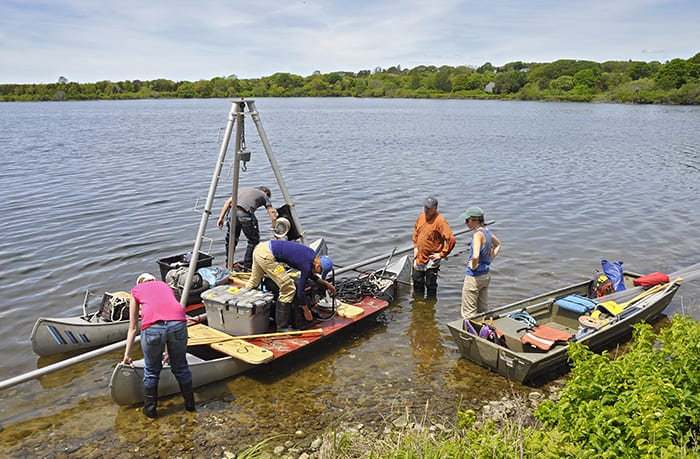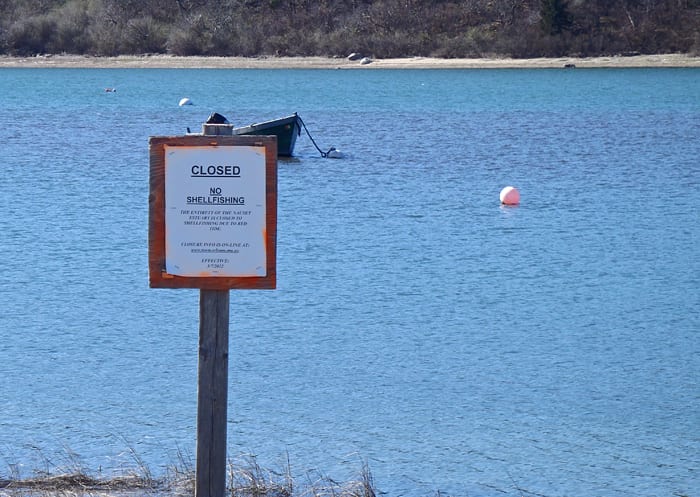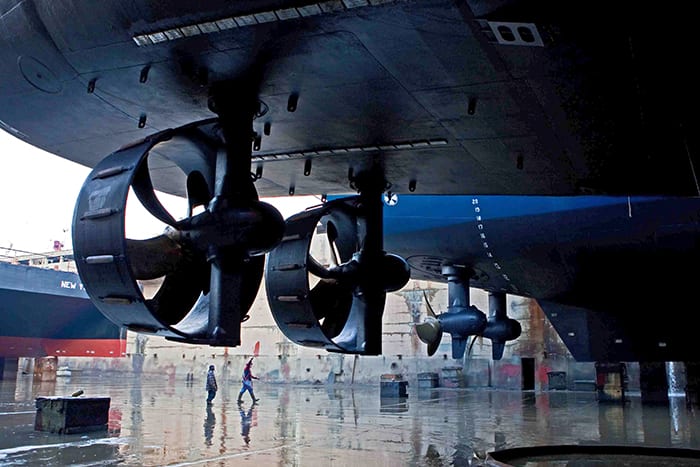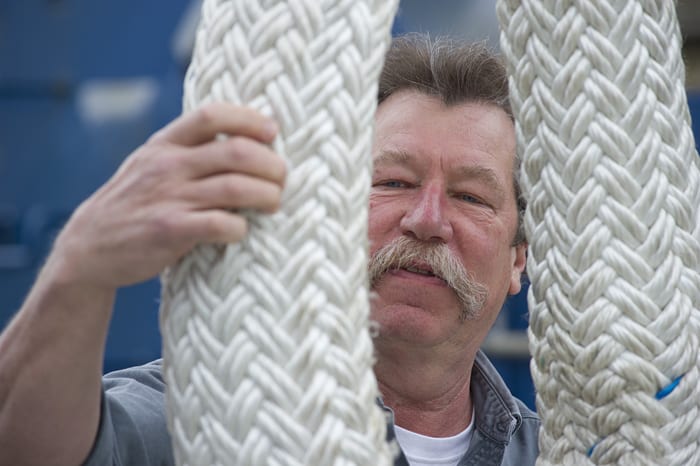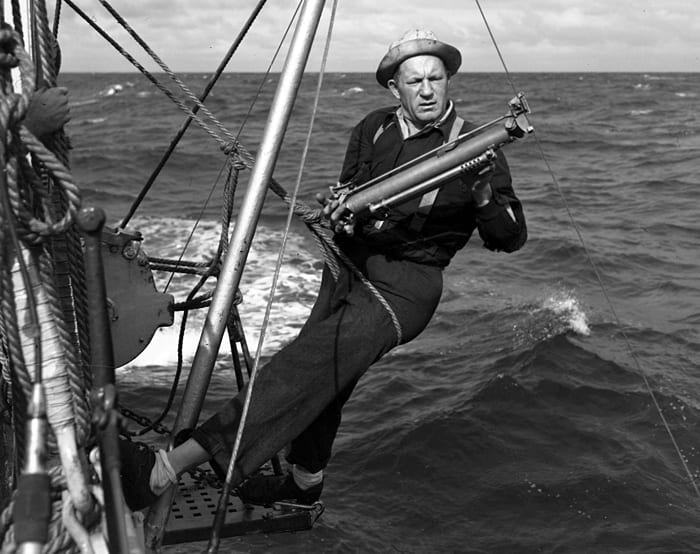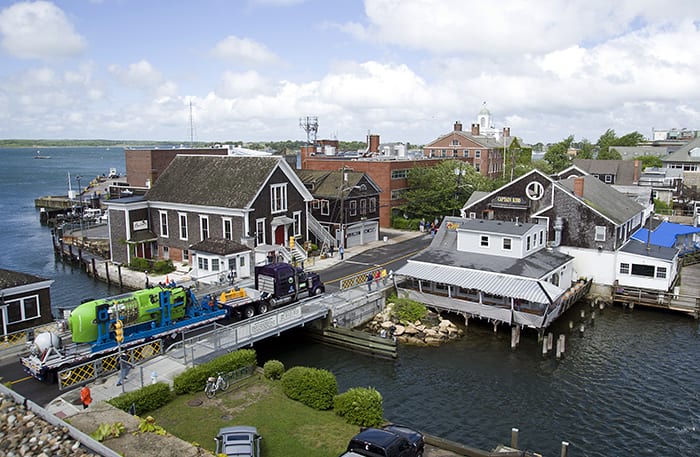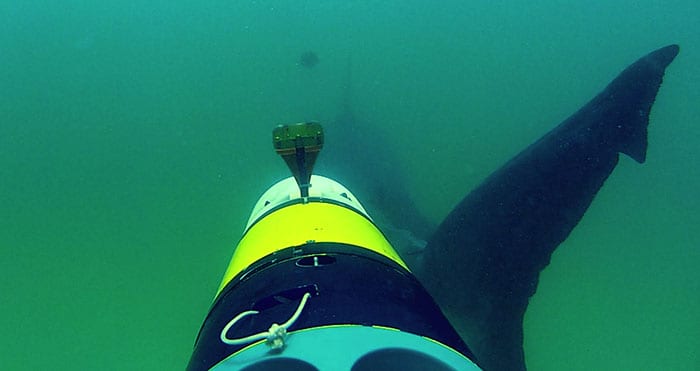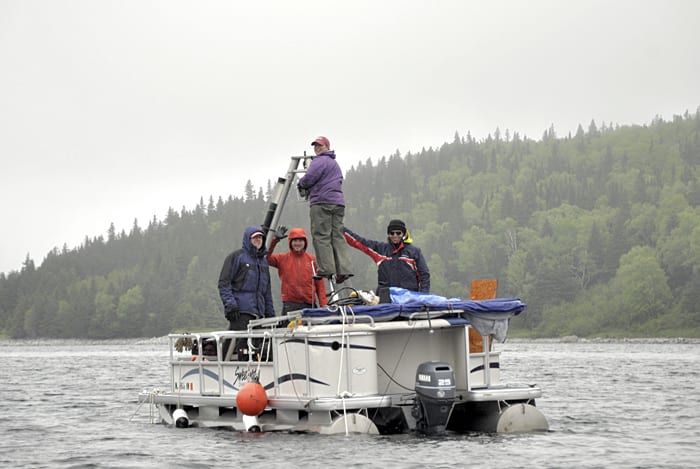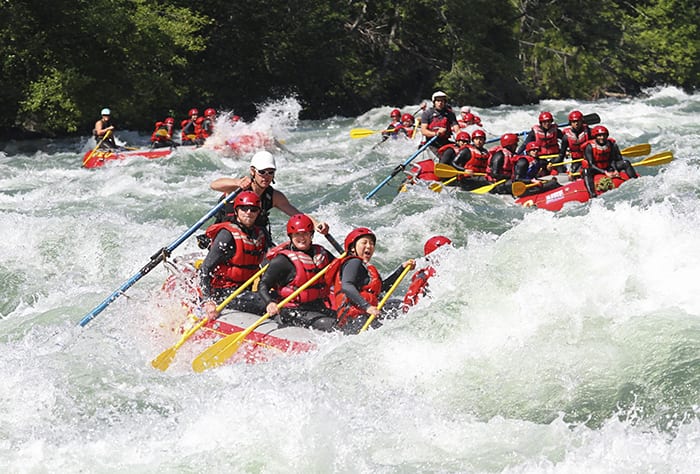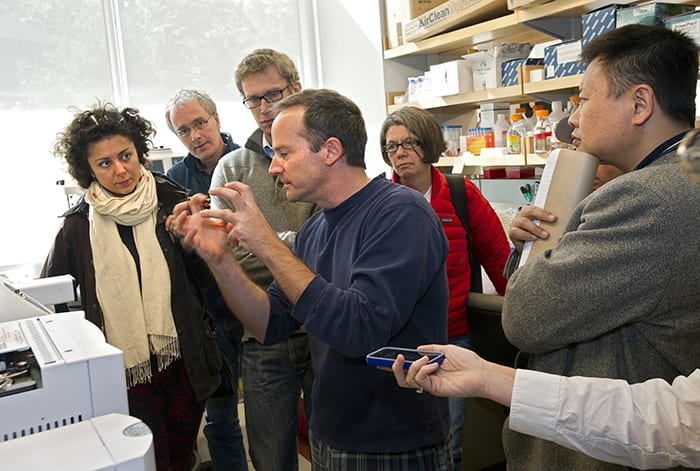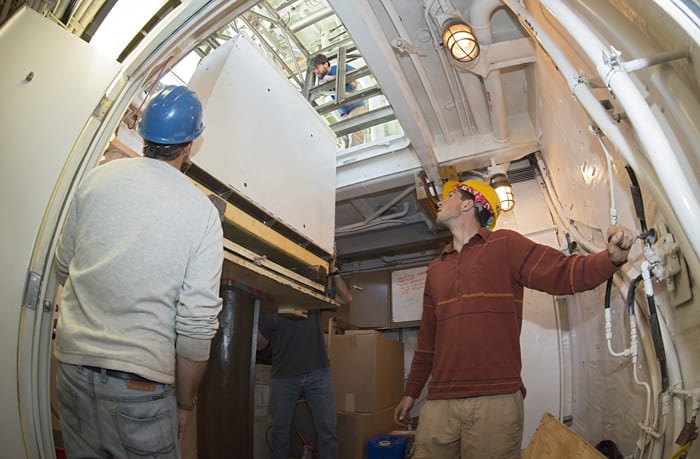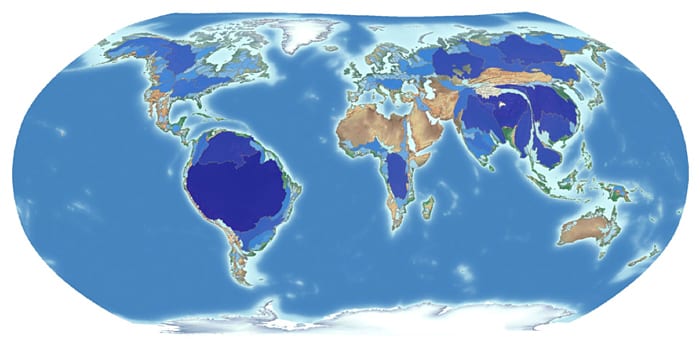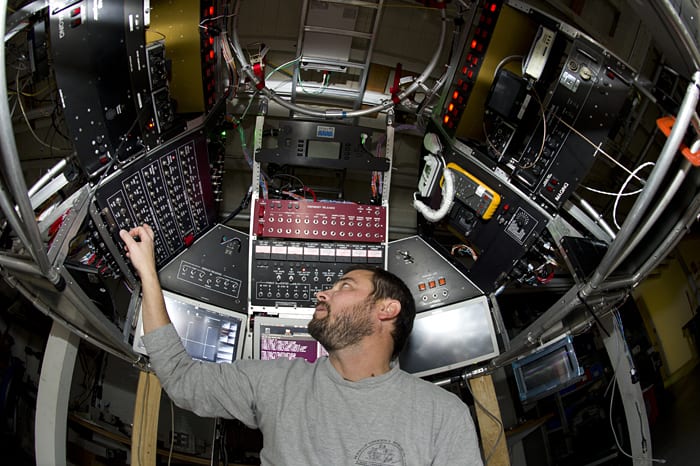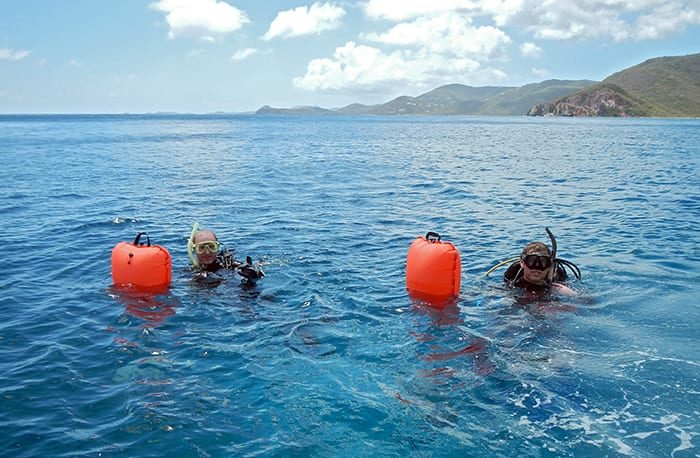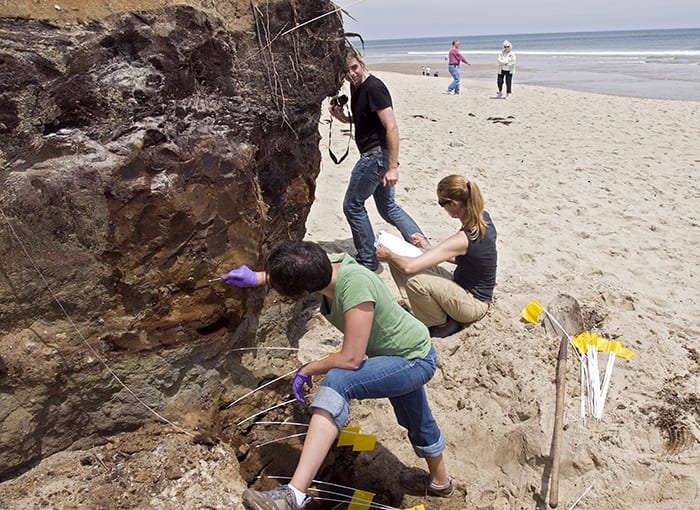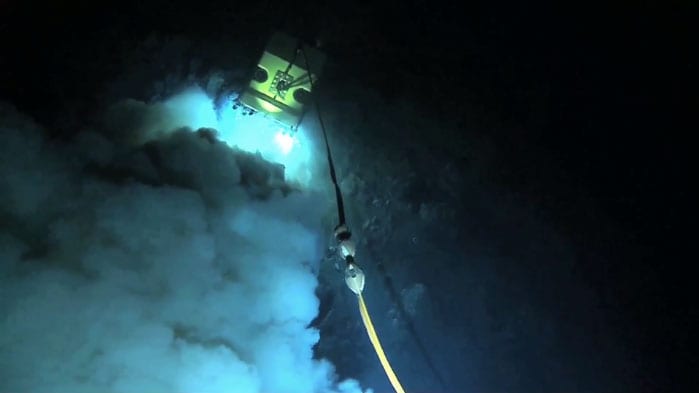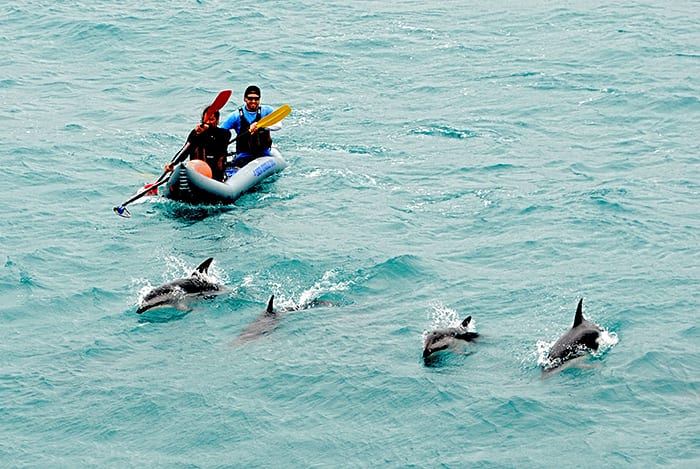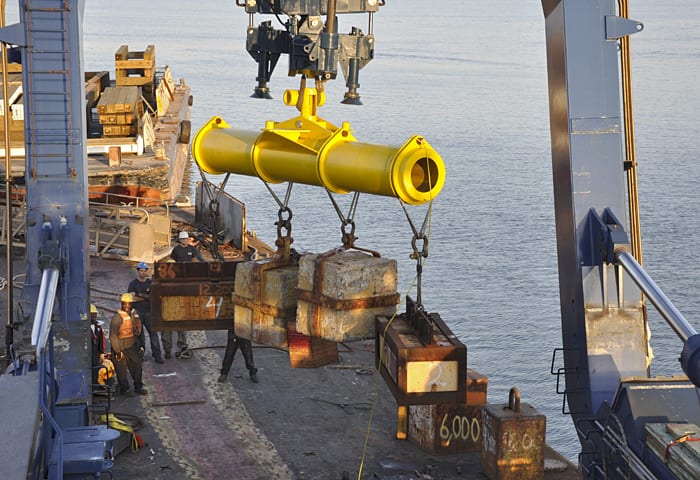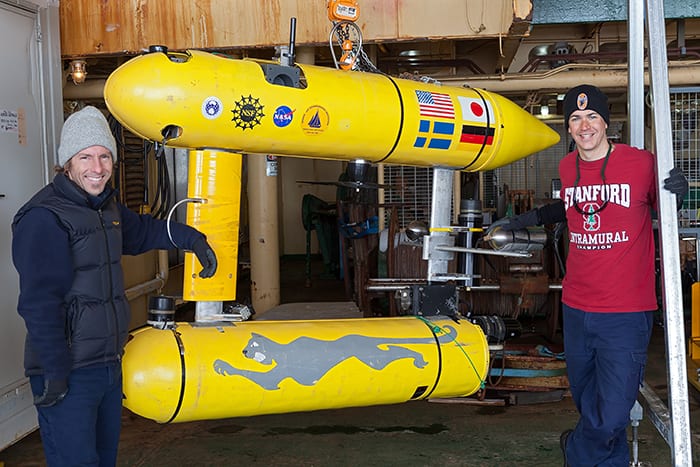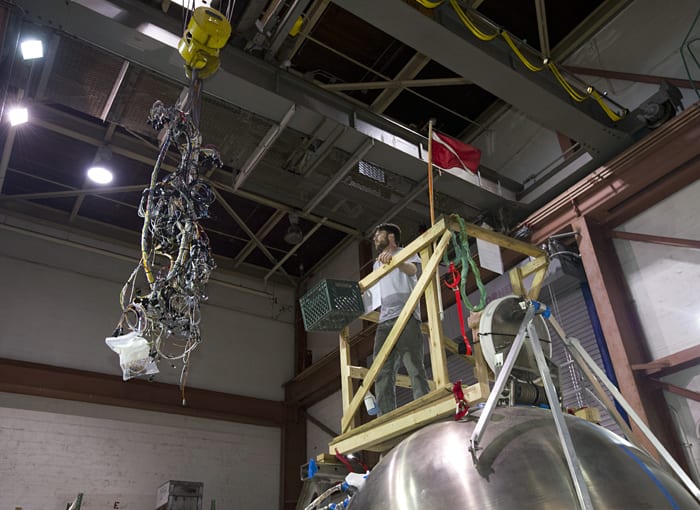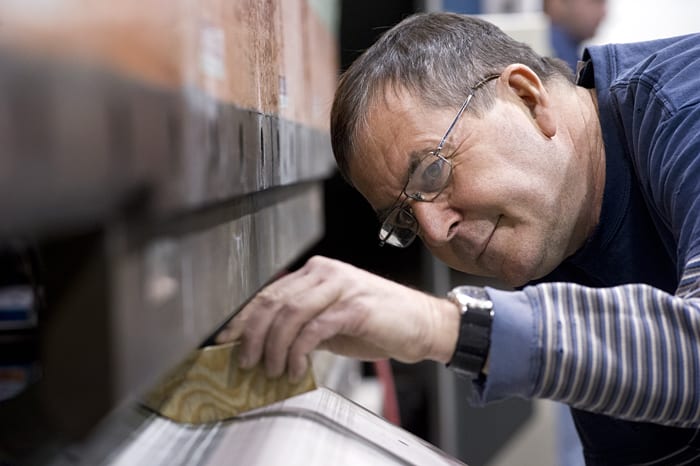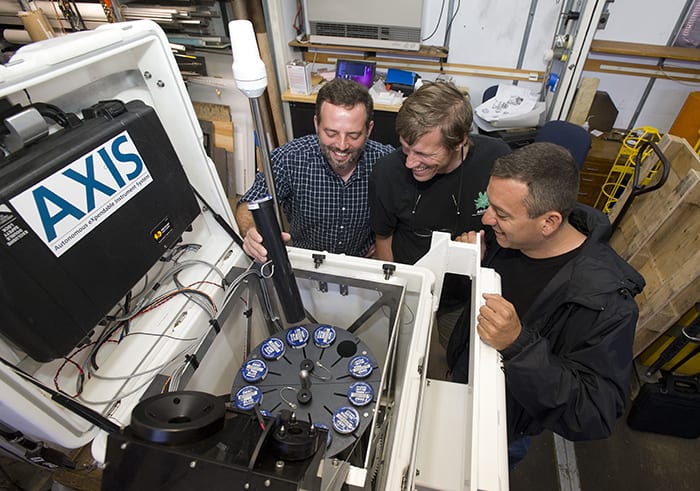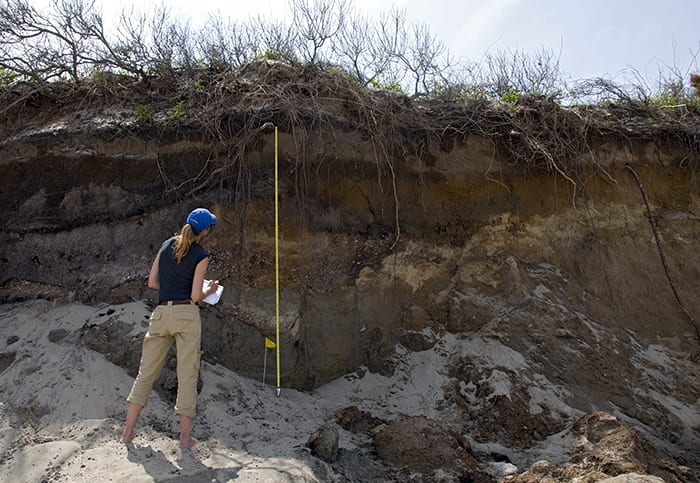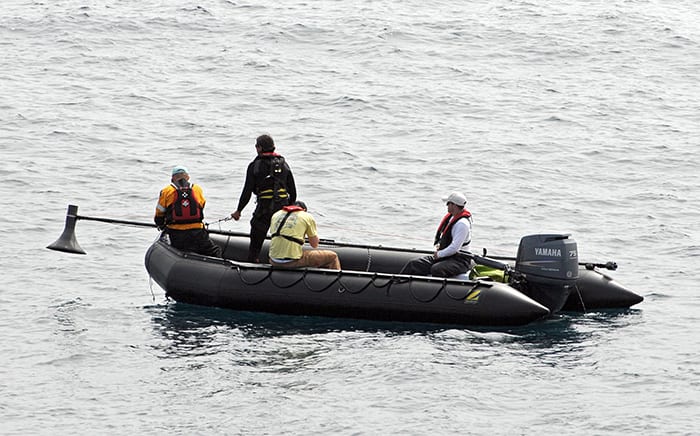Multimedia Items
Getting to the Bottom of Things
WHOI coastal geologist Jeff Donnelly analyzes hurricane activity through the traces they leave behind. In summer 2013 Donnelly and his lab members returned to a Cape Cod coastal pond that…
Read MoreSign of the Times
A sign stands sentinel in Nauset Estuary on Cape Cod, warning that the estuary is closed because of red tide. Annual springtime red tides, a type of harmful algal bloom,…
Read MoreStart Your Engines
In December 2012, both WHOI-operated research vessels, R/V Knorr (foreground) and Atlantis completed a scheduled maintenance period in a South Carolina drydock. After returning to WHOI, Knorr returned to its…
Read MoreNeed a Lift?
The recent upgrade of the human occupied vehicle Alvin added enough weight to the vehicle that the equipment used to launch and recover it from R/V Atlantis also had to…
Read MoreDrops in the Ocean
WHOI technician Arnold Clarke conducts a “hydrographic station” aboard the original WHOI research vessel Atlantis, most likely in the late 1940s. A hydrographic station is a basic operation in oceanography,…
Read MoreComing Home
On June 14, the submersible DEEPSEA CHALLENGER completed a cross-country trip from California to Cape Cod, arriving just as the sun broke through the clouds in Woods Hole (shown here).…
Read MoreREMUS SharkCam deployed off Chatham, Mass., in 2012
New Found Cores
WHOI’s Jeff Donnelly, Michael Toomey, Andrea Hawkes, and Richard Sullivan (left to right) gathered data from the R/V Arenaria in July in the waters of Newfoundland, Canada, to reconstruct a…
Read MoreFun on the Fraser
WHOI’s Geodynamics Program fosters interdisciplinary research in the earth sciences among faculty, students and postdoctoral fellows. It is centered around an annual spring semester seminar series and a study tour…
Read MoreEducating Journalists
Every year, WHOI scientists host a daylong visit by members of the Knight Science Journalism Program at MIT, which offers full-year fellowships to journalists to increase their understanding of science,…
Read MoreEnergizers for Alvin
WHOI engineers Chris Lathan (left) and Drew Smith (right) use a hydraulic lift on R/V Atlantis to raise one of the batteries that powers the human-occupied submersible Alvin from a…
Read MoreRiver Reach
River discharge in the Northern Hemisphere summer is captured in this frame from an animation that displays average weekly runoff to the ocean from the world’s major rivers using data…
Read MoreFiring the Wiring
In a mockup of the Alvin submarines personnel sphere, pilot Mike Skowronski tests the intricate system of wires that connect control panels to thrusters, ballast tanks, cameras, and other systems…
Read MorePainting a Soundscape
MIT-WHOI graduate student Max Kaplan (right) and biologist T. Aran Mooney retrieve DMONs, passive acoustic recording tools, off the coast of the US Virgin Islands, using lift bags. The team,…
Read MoreHidden Cape Cod
Members of WHOI’s Coastal Systems Group and the National Ocean Sciences Accelerator Mass Spectrometry Facility record and sample recently exposed layers on Eastham’s Coast Guard Beach. Here, Stephanie Madsen (right)…
Read MoreGo Down Jason, Let My Mooring Go
When a trigger mechanism failed to release a key deep-sea instrument, WHOI physical oceanographer Ruth Curry brought together a gung-ho team to try to retrieve it. By Daniel Cojanu, Elise…
Read MoreLeading the Way
Scientific technician Luis Lamar from the WHOI Advanced Imaging and Visualization Lab and assistant professor of biology at Texas A&M University Corpus Christi Andreas Fahlman paddle with a pod of…
Read MoreThat’s Heavy, Man
Representatives from WHOI and Detyens Shipyard in Charleston, South Carolina, watch as the beefed-up A-frame and new winch of R/V Atlantis are put through their paces. The lifting equipment was strengthened to…
Read MoreThings Are Looking Up
WHOI engineer Clay Kunz, left, and Peter Kimball, a recent postdoctoral scholar, explored under Antarctic ice in 2012 using the autonomous underwater vehicle (AUV) Jaguar. During the expedition, organized by…
Read MoreAlvin’s Nervous System
A 150-pound mass of copper wires, coaxial cable, connectors, and insulating jackets is guided by Alvin Electronics Technician and Pilot-in-Training Chris Lathan, who stands on top of the sub. The…
Read MoreGetting in Shape
Fabricator Paul Keith uses a wood template to check the curve of a metal part he was shaping for use on the research submarine Alvin. The titanium piece was destined…
Read MoreNext Best Thing
Typically, a common oceanographic instrument known as an eXpendable BathyThermograph (XBT) are deployed by hand from research and cargo ships to collect a variety of data including temperature and depth.…
Read MoreOld Layers, New Insights
Last Spring, a Nor’easter blew through Cape Cod and exposed the paleolithic under-layers of Eastham’s Coast Guard Beach. The Coastal Systems Group and National Ocean Sciences Accelerator Mass Spectrometry Facility…
Read MoreBlowhards
Four researchers sit in an inflatable boat waiting for a sperm whale to surface. From left, Michael Moore, Director of the WHOI Marine Mammal Center; Andreas Fahlman, Texas A&M University;…
Read More
